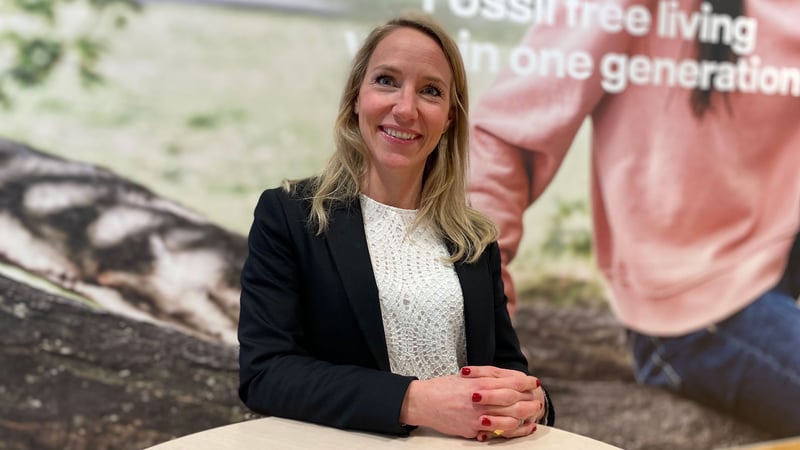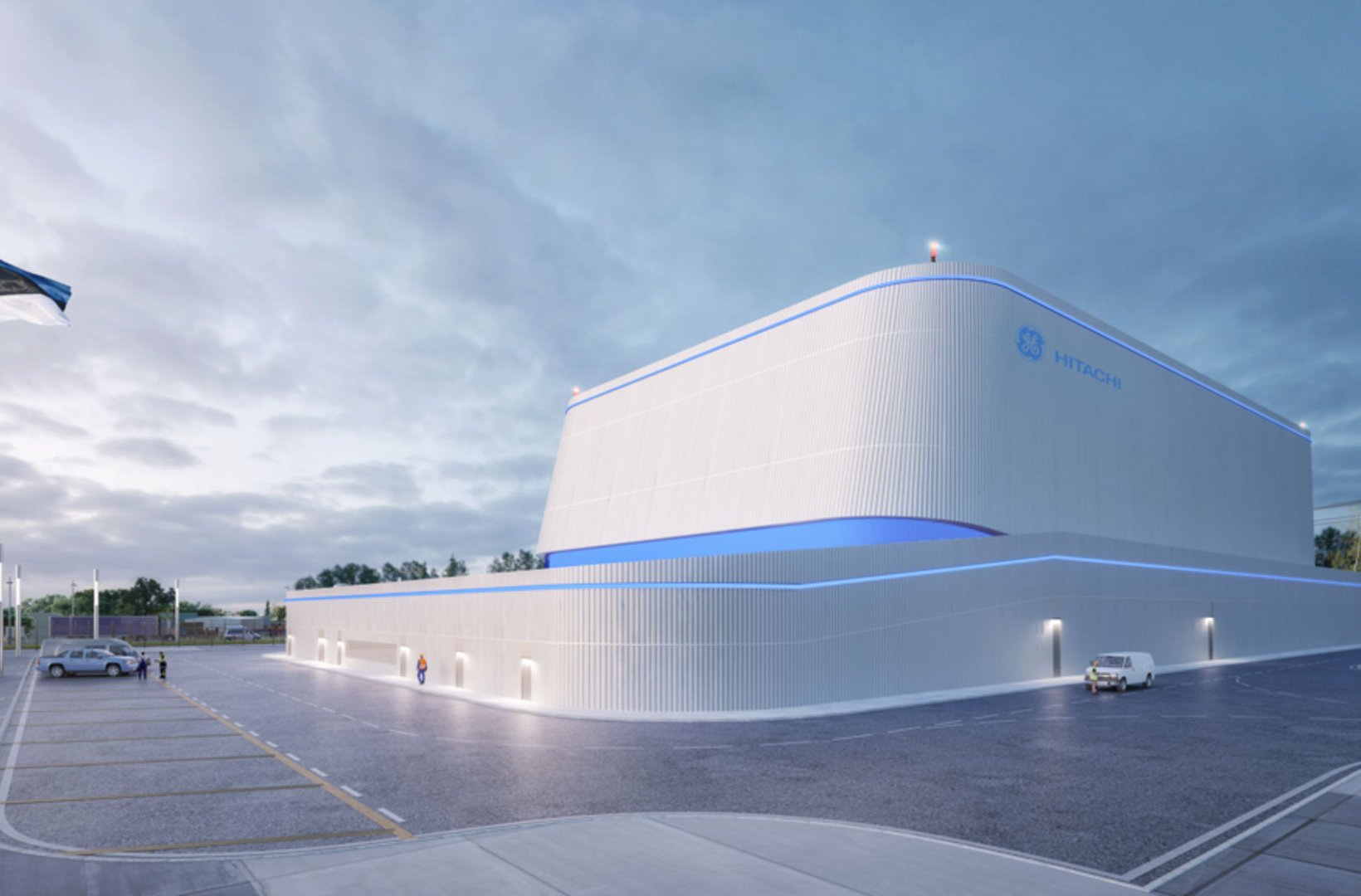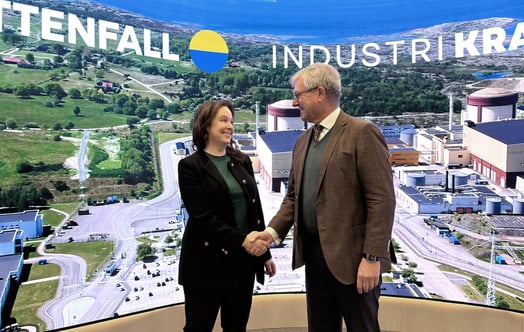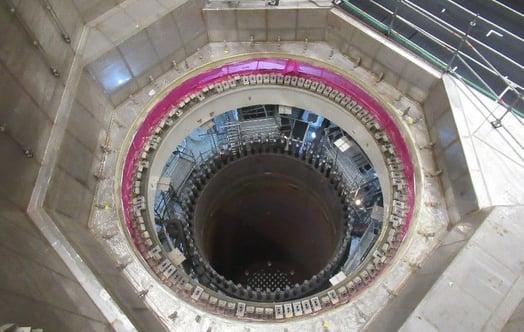Small modular reactors, so-called SMRs, are becoming a clearer choice in nuclear power. What are the advantages? How can they be used?
In the ongoing discussion about the nuclear power of the future, one acronym has become more and more visible – SMR. Small-scale modular reactors are seen as a complement to more traditional, large nuclear power plants, and as a relatively simple way of facing a future where non-fossil power sources will need to get the job done.

Desirée Comstedt, Vice President Fleet Development at Vattenfall
According to Vattenfall’s Desirée Comstedt, there are many advantages to small nuclear power plants: technical innovations, better data modelling, and modern building technology are making reactor construction easier. The amount of components is reduced. This makes SMR reactors easier to build, operate and maintain, which also reduces costs.
”A premise to reduce costs is the opportunity for joint licensing among responsible authorities in countries that have nuclear power”, says Desirée Comstedt. “Common licensing may reduce project risks so that the same reactor type may be built in several countries. Reduced project lead times and project risks thanks to adaptable licensing will facilitate financing.” The conditions should be good for an SMR reactor to be co-licensed within the EU, in contrast to the licensing of large-scale nuclear power plants that have been constructed up to now. What costs money within nuclear power is partly the financing and partly the licensing costs. If these two are reduced, it will be easier to finance.”
More usage areas and better safety
In addition to reduced costs, Desirée Comstedt can also see both the flexibility of the SMR and having a lot of usage areas as advantages over large nuclear power plants. The power of an SMR plant is about a quarter of a full-scale plant (about 300 megawatts versus 1,300), which makes them more useful in the electrification of industry, for example.
"You don't waste as much heat with an SMR and you can use them in processing industries. They can also be used to produce heat or hydrogen gas."
A third obvious advantage of SMRs is safety, although Desirée Comstedt emphasises that today’s nuclear power plants are already very safe.
"One positive feature of SMR reactors is passive safety, a way of designing a reactor so that the laws of nature mean that it simply switches to a safe mode in the event of a serious breakdown. In practice, no active measures, signalling, external electricity supply or anything else is required for this to happen. But even today’s large reactors with active systems are very safe and have several different, double safety systems that can switch on automatically in the event of an incident. As a last resort, manual measures can be taken. But the idea of passive safety is that no external input is required for it to work."
Part of Estonia project
North America is driving development of the SMR for the most part. Desirée Comstedt mentions Canada specifically as a pioneering country that is hoping to put the first plant into operation by 2028, but she also believes that most of the world’s major nations want to get their SMR technology on the market early. The ability to scale up generation means that with the right technology, you could achieve relatively fast profitability in manufacturing.
What about Sweden? Will we get SMRs here, too? And when?
"The answer depends on how the electricity market and industry develop. Demand for fossil-free electricity, for example, could double in the 2040s, as we're looking ahead to an electrification revolution. We're also looking towards and hoping for a new industrialisation with strong requirements for secure supply, stable electricity, and most likely innovative applications with things like hydrogen. We think this is very likely, and we believe that demand for electricity will skyrocket by the 2030s at the latest. Put simply, we need it to achieve our climate and supply goals. This bodes well for SMRs in several usage areas. Exactly when this will happen, it's too early to say and it depends on a lot of factors. Of course, it also has to a long-term financially sustainable and a profitable investment in order to be up for consideration, and this means that the conditions need to be analysed in detail."
In smaller countries, SMRs are seen as an opportunity for creating a better energy mix. Vattenfall is involved in a project in Estonia, where the company, Fermi Energia, is planning to build an SMR plant, and Vattenfall can help with developing the skills of their staff within SMR by joining in the process during the preparation of their application, and thereby evaluate what needs there will be for training when it comes to technology and construction, for example.
With a population of 1.3 million, its size, low public debt and a market economy with a focus on IT, Estonia as a nation is essentially perfect for SMRs. The need for electricity is not big enough to warrant a large nuclear power plant being built, but an SMR plant will open up completely new opportunities. For one thing, the construction of the SMR means that Estonia can significantly improve the country’s climate impact, as the country is now dependent on burning shale oil, which is a huge problem for the climate, and it has the EU’s highest average carbon dioxide emissions per kilowatt hour of electricity produced.
Part of a system – not the solution for everything
Other countries of a similar size should also take a look at similar solutions, although Desirée Comstedt believes that traditional nuclear power plants are needed in larger, industrially-dense countries that currently have no nuclear power, such as Poland. She also emphasises that rather than being the solution to everything, SMR will potentially be part of a larger and more sustainable energy system.
"If you have a portfolio with a lot of renewables, it’s also important to have plannable power that can balance the system. I think this is important for Estonia and a lot of other countries in Europe. Unlike Sweden, most nations don't have hydro power to rely on, so SMRs are an alternative. If you look at the system as a whole, I think SMRs are a very positive thing from an environmental and financial perspective."
Small-scale modular reactors
SMRs use the same nuclear fission technology as reactors in traditional nuclear power plants, but are considerably smaller. The term refers to their size and effect, not a specific type of reactor or nuclear process. In order to be counted as an SMR, the reactor has to have an output of around 300 megawatts.
Fourth generation nuclear power
The fourth generation of nuclear power, or Generation IV, is intended for the construction of larger systems of reactors and nuclear fuel cycle facilities, where the fuel will be used more efficiently and will not leave long-life waste behind. Generation IV is also an update in terms of safety. The design of the system has to be of a type with which accidents with major consequences will not take place.
SMRs can be Generation IV, but are not synonymous with it, as Generation IV can also be applied to larger, traditional nuclear power plants.




